RTD Troubleshooting Made Easy With PIE RTD Calibrators
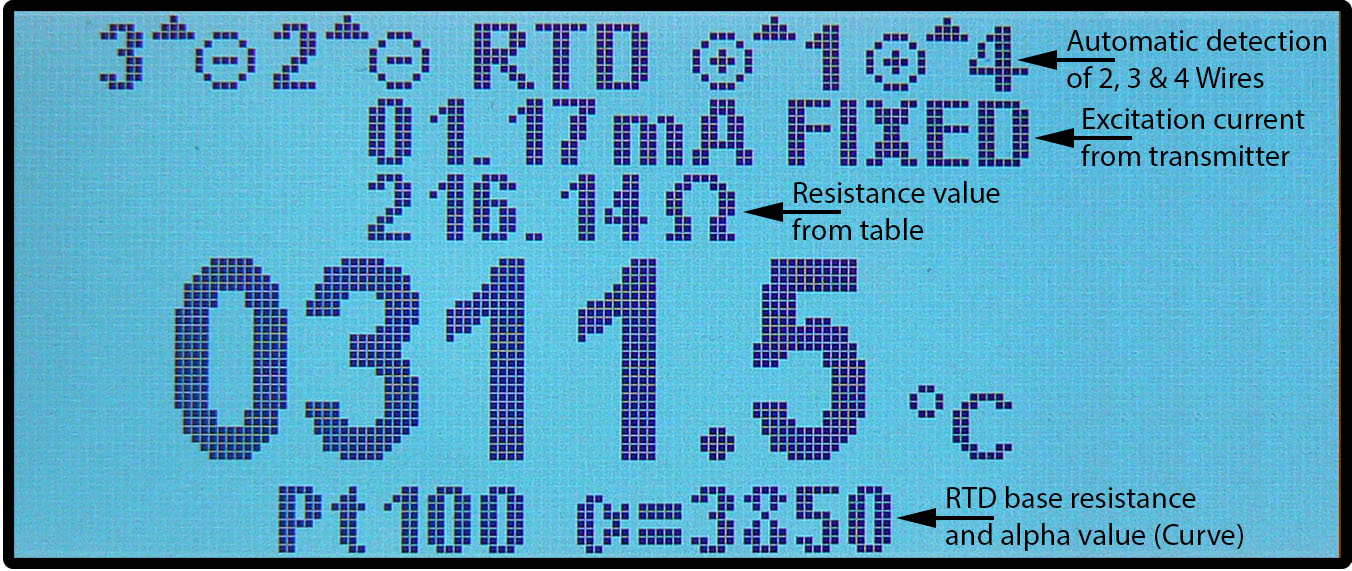
Use a PIE calibrator to simulate a perfect RTD probe for RTD Ttoubleshooting and fast RTD calibration without a decade box
RTD troubleshooting can cause big headaches for instrument technicians. Have you had issues in the past where your RTD calibrator wouldn’t work with some of the instruments in your plant? Calibrating smart transmitters and PLCs is a problem for many electronic RTD calibrators. These instruments measure RTD sensors with a pulsed excitation current that is too fast for many calibrators to lock onto which causes errors in calibration. PIE calibrators have unique circuitry designed to accurately calibrate smart and multivariable transmitters, PLC input cards, DCS systems and multichannel recorders.
PIE RTD Calibrators work with the RTDs you use including Platinum 10, 50, 100, 200, 500 & 1000 Ohm (alpha = 3850), Platinum 100 Ohm (alpha = 3902, 3916, 3926), Copper 10 & 50 Ohm, and Nickel 120 Ohm. Or calibrate from 0.000 to 400.000 and 0.00 to 4000.00 Ohms.
Our RTD simulation is compatible with a wider range of excitation current signal than most other brands of calibrators on the market – they accept excitation signals up to 10.2 milliamps and from DC to 0.01 second pulse width.
RTD troubleshooting with PIE calibrators
Troubleshoot RTD sensor connections and find broken wires with patented RTD ConnectSense, automatically detecting 2, 3 and 4 wire RTDs. When the PIE calibrator is connected directly to the RTD sensor it will indicate on the display which wires are connected. This quickly points out if there is problem with the wiring or with the sensor itself. The pictures show how easy it is to troubleshoot a four wire RTD with a broken wire or corroded connection. in the first picture ConnectSense indicates that there is a problem with wire #3 and the second picture is after the technician has located and fixed the problem. This is much quicker and easier than ohming out each pair of wires and trying to keep track of the good/bad connections! RTD Troubleshooting made simple!
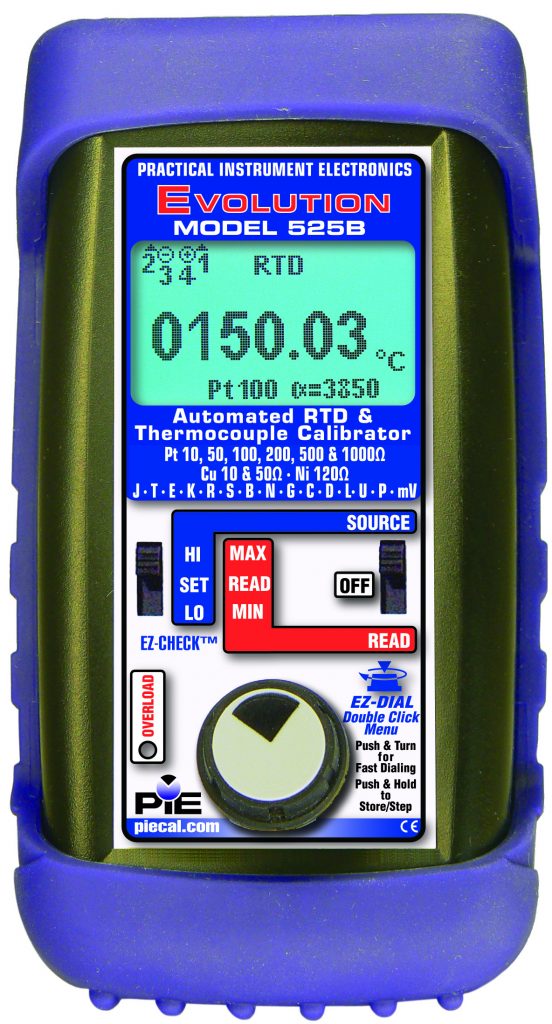

Some PIE calibrators include a secondary display which shows the resistance value corresponding to the RTD temperature to verify that the temperature matches the ohm value found in the RTD temperature vs. ohms table. This is handy as a double check that the correct RTD type has been selected. Our advanced models also indicate the magnitude and direction of the excitation current used by the instrument to measure an RTD sensor. If no excitation current is detected there is a problem with the instrument.
"Oops – I accidentally connected the RTD calibrator to the loop power supply"
PIE’s unique fuse-less circuitry also protects the calibrator against mis-connection. If you accidentally connect the wires across the 24 loop supply, or any connections up to 60 VDC, the calibrator will light up the OVERLOAD LED and will continue to function accurately when reconnected correctly. No more searching for non-standard fuses!
Buy a PIE calibrator designed for RTD troubleshooting and calibration

RTD and Thermocouple Calibrator – PIE 525B
Advanced troubleshooting tools $2,319.00 – $2,574.00
RTD Process Calibrator – PIE 211
With patented RTD wire detection $1,460.00 – $1,575.00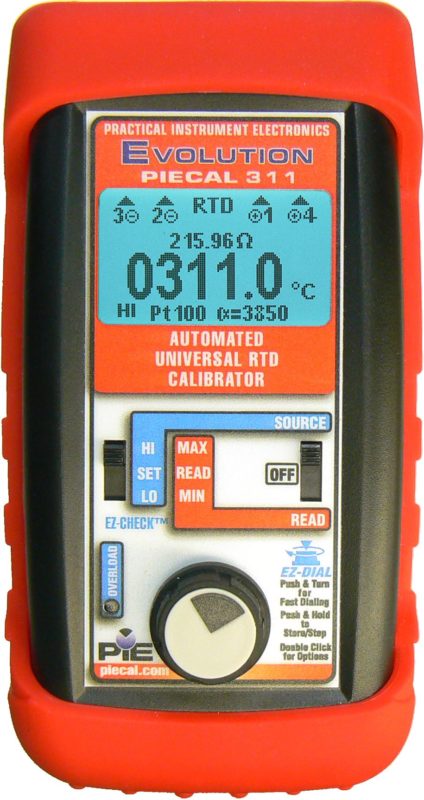
RTD Process Calibrator – PIE 311
With patented RTD wire detection $2,094.00 – $2,209.00
Diagnostic RTD and mA Calibrator – PIE 311Plus
2 units in 1, with patented RTD wire detection $2,454.00 – $2,634.00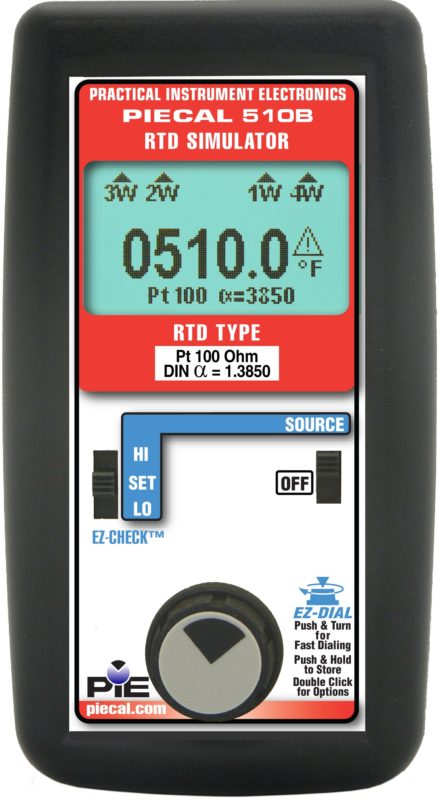
Single Type RTD Calibrator – PIE 510B
Source only, also ohms $830.00 – $905.00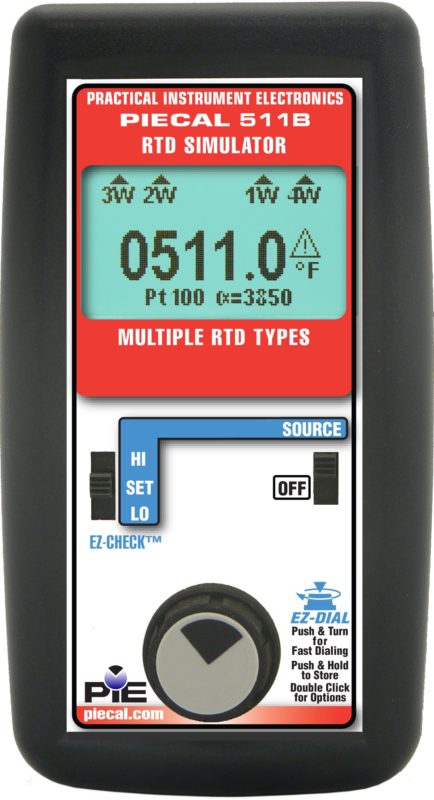
10 Type RTD Calibrator – PIE 511B
Source only, also ohms $1,074.00 – $1,139.00

